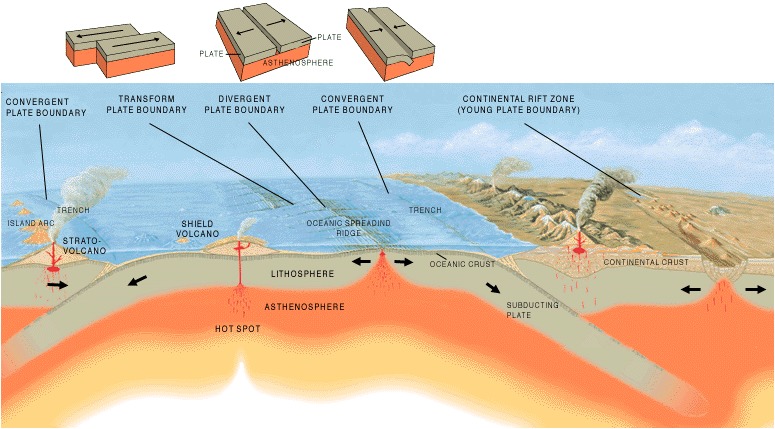Tectonic Setting Comparison:
MORBs vs. OIBs vs. CMs
Item
-
Title
-
Tectonic Setting Comparison:
MORBs vs. OIBs vs. CMs
-
Description
-
A comparative look at the landforms, magma settings, and the geochemistry of different tectonic settings
-
MORB
Mid-Ocean Ridges are the result of extensional tectonics from Divergent Margins
As the plates spread apart, new lithosphere is formed in their place
Mid-Ocean Ridges are sourced from upper mantle magma, which melts due to depressurization melting
As the rock above moves away from the location, pressure is drastically reduced allowing for magma generation
The rising melt creates a topographic high, which falls away further from the rift due to the rocks becoming colder and denser. Mid-Ocean Ridges come in two primary forms with different land forms, the fast-spreading ridges and the slow-spreading ridges
Fast-spreading ridges generally have a rate of greater than 5 cm/yr, and have Tall, narrow ridges, Smooth slopes on the flanks, and Less compositional diversity
Slow-spreading ridges generally have a rate of less than 3 cm/yr, and have Flat, wide ridges, Cracked and steep slopes, and Greater compositional diversity
Composition at such ridges is tholeiitic and depleted in incompatibles due to an upper mantle source. Magmas from ridges can never be primary magmas, and must have undergone evolution at some point.
-
OIB
Ocean island basalts form in the middle of plates due to a hotspot below, or rising plume from a deep mantle source that creates a strand of islands as the plate moves overhead.
OIBs tend to have volcanic rock compositions representative of deep mantle composition, the source of the rising plume.
Not all ocean island basalts breach the surface of the water and some islands that do rise above sea level do not stay above sea level due to erosion.
Produce basaltic magmas rich in incompatibles due to deep mantle source.
Heat from mantle plume drives magma production.
OIB come from fertile magmas, meaning constituents have not been removed. Deep mantle source causes this.
CM
Convergent margins form at locations where two plates are moving towards each other, resulting in either subduction of one plate under the other or the collision of two plates
Subduction zones tend to create volcanic arcs, which tend to produce Calc-Alkaline magmas and tend to be Basaltic to intermediate in composition, but can be rhyolitic in composition
Subduction zones tend to create trenches
Source of magma is from melting asthenosphere above the subducting plate, which melts due to the release of volatiles (i.e. H2O) from subducting minerals
Convergent margin is enriched in incompatibles due to the assimilation of overlying plate as melt rises
-
Creator
-
George Tillery and John Onorati


